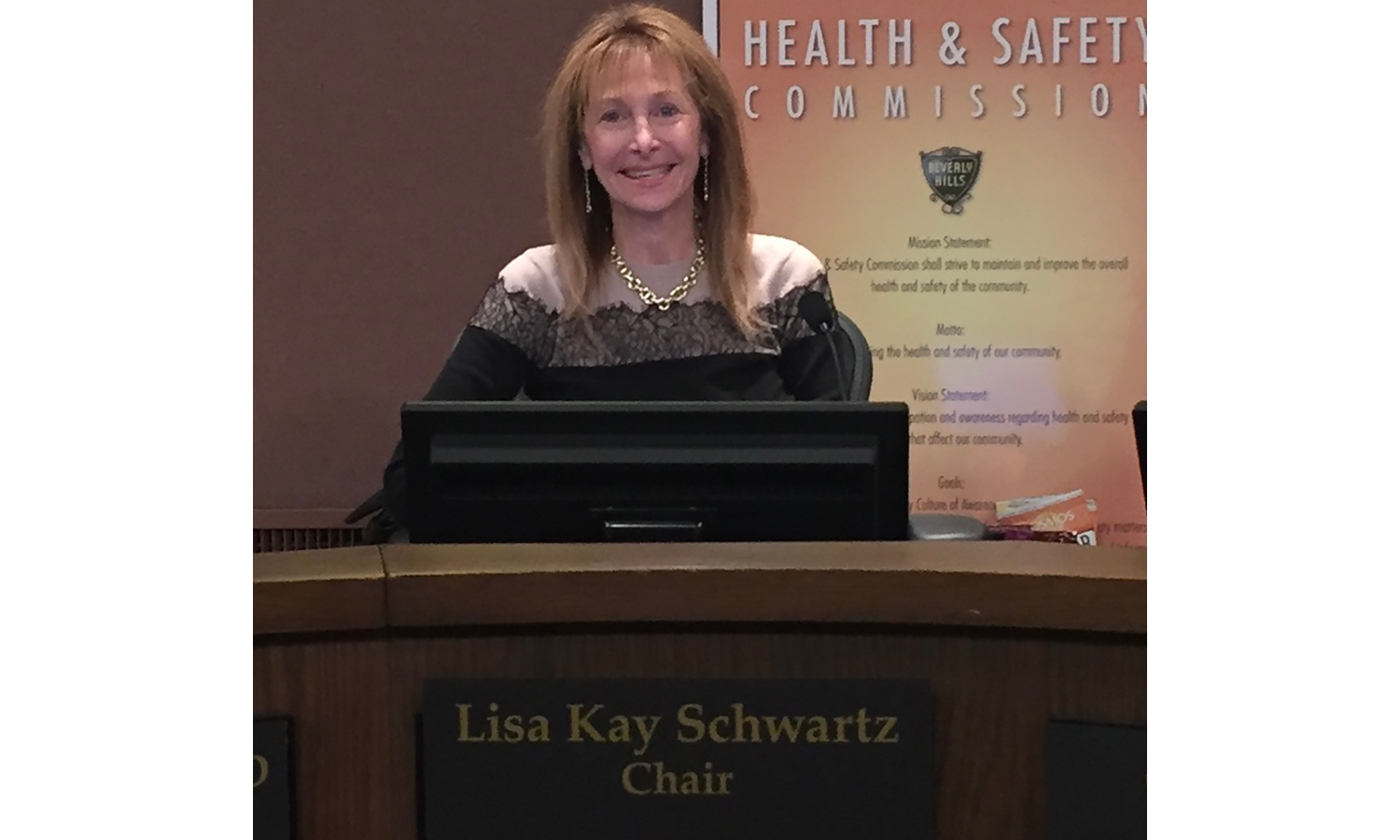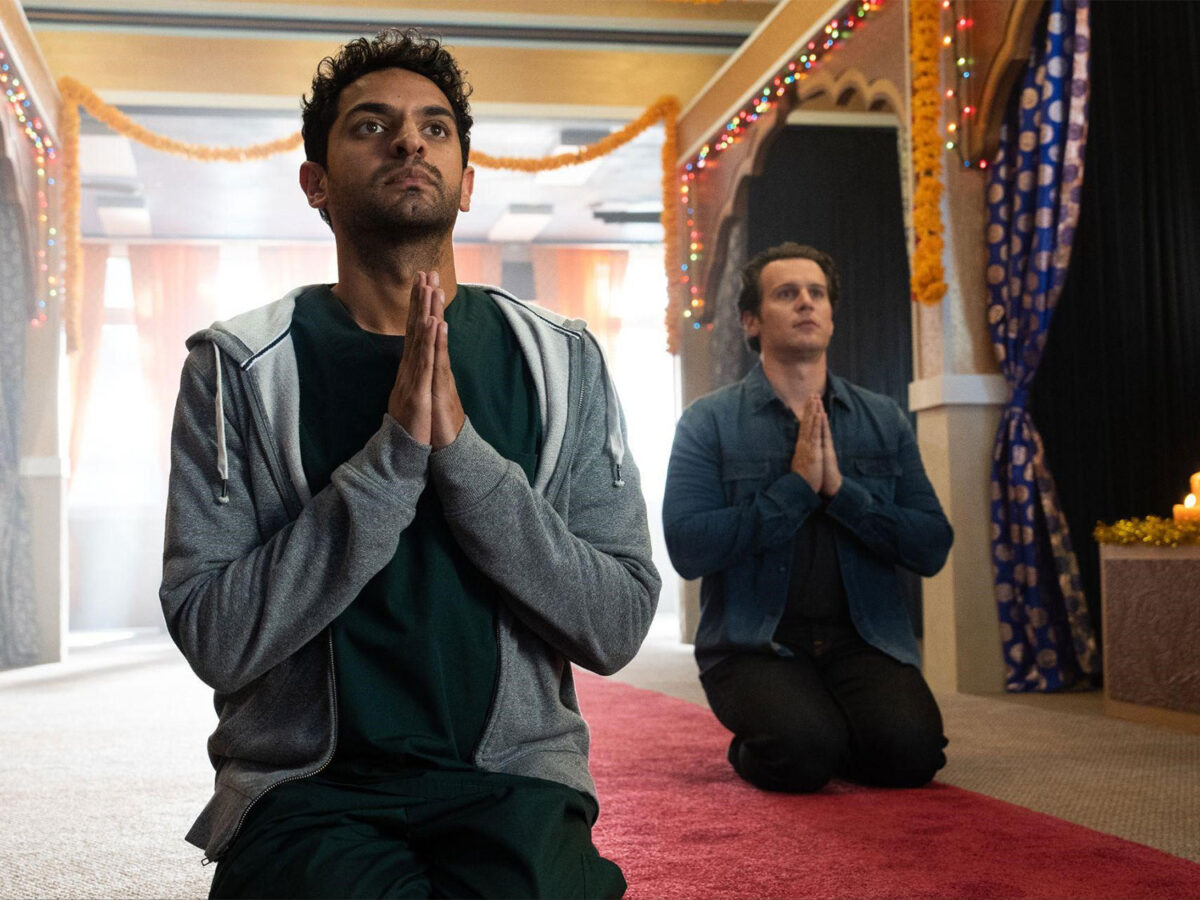Over the course of the pandemic, Lisa Kay Schwartz noticed that empty roads were causing bad habits like jaywalking, distracted driving, and running stop signs. She joined the Traffic and Parking Commission in July.
As protests roiled the city last summer, Sharona Nazarian was fascinated by the city’s installation of automated LED lights. Nazarian joined the Public Works Commission in January, inspired to help a department she said “supports the city’s backbone” and “interfaces with every component in the city.”
Beverly Hills citizens are always looking around and asking how to make their city more efficient, beautiful, fun, and safe. Seventy-two of them have chosen to join one of the city’s 12 commissions as one way to accomplish that. Commission terms, which start off at two years and then extend to four pending Council approval, begin on either Jan. 1 or July 1, so a total of six new commissioners have been appointed since the start of the summer. The City Council has recognized new and departing commissioners at the beginning of each of its formal sessions.
With so much shuffling around, city residents may wonder who these commissioners are, what they do, and how to join their ranks.

Commissioners are volunteers appointed by the City Council to “help bring about important decisions that can shape the future of the City, often using their impressive talents and expertise,” according to the 56-page City of Beverly Hills Commissioners’ Handbook. Commissions act as an “intermediary body between the public, city staff, and the City Council” by conducting meetings, public outreach, providing recommendations to the Council on pertinent policies, and, in the case of some Commissions, ruling on matters themselves.
Not all commissioners go on to become council members, but almost all council members began as commissioners. Vice Mayor Lili Bosse served on the Planning, Traffic and Parking, and Arts and Culture commissions; Councilmember Lester Friedman served on the Traffic and Parking Commission; and Councilmember Julian Gold served on the Traffic and Parking and Recreation and Parks Commissions. Mayor Robert Wunderlich served as the city’s representative to the Metropolitan Water District, a one-person role that is included on the full list of Commissions, while Councilmember John Mirisch helped form the Cultural Heritage Commission and the Sunshine Task Force.
In recent weeks, Planning Commission Chair Andy Licht and Nazarian have announced they will run for City Council in 2022.
Commissioners combine staff reports, public input, and their own expertise to offer the Council recommendations on everything from whether to extend the eviction moratorium (the Rent Stabilization Commission), allow rooftop dining in the Business Triangle (Planning Commission), or whether to recommend the comprehensive “Meet Me at Wilshire and La Cienega” development plan for the future Metro station (Traffic and Parking.)
“For me it’s what some people call the greater good I make my decisions based on what I think is best for the city,” Licht told the Courier. Licht was appointed as Chair in July, when it was his turn in a rotation that works similarly to that of the City Council.
Licht has been part of the Planning Commision since July 1, 2016. Before that, he was part of the Traffic and Planning Commission, which he joined as the “next logical step” after years of work on various city committees and graduating Team Beverly Hills, a program educating residents on the inner workings of city government and services.
For 18 months, Licht’s work on Traffic and Parking overlapped with the beginning of his term on the Planning Commission, which is unusual given that the current handbook says that commissioners must wait at least a year before serving on another commission. Other than that, there aren’t many barriers to apply. With the exception of the Architectural and Human Relations, all it takes to apply is at least two years of residence in Beverly Hills, and eligibility to vote in municipal elections, though registration isn’t required. After the city publicizes the openings through e-notices, social media, local newspapers, and at meetings, eligible residents fill out commission-specific applications, and then sit for an interview with the commission’s two Council liaisons, current Commissioners, and city staff.
“I think the application process is amazing,” Schwartz said. “The application is supposed to be very detailed you’re really supposed to give all your answers in that application so they can read it at their leisure and really understand where the candidate’s coming from, what they’re going to bring to the table, what they see as problems, what they see as great.”
Generally the applications ask about ten questions, including reasons for applying, previous experience in the city, potential conflicts of interest, other time commitments, previous experience in the Commission’s area of interest, and opinions on issues pertinent to their Commission.
The Traffic and Parking Commission, for example, asks about technical expertise on transportation issues, and major parking issues in the city, while the Planning Commission asks for familiarity with the city’s General Plan and how applicants “view the balance between the rights of property owners (business and residential) to develop their property versus the rights of neighbors who may be impacted by such development.”
During in-person interviews, each of the four interviewers ask only one question, and then deliberate after the interviews until a consensus is reached. Selection is competitive: during the most recent selections made in the summer of 2020, the Planning Commission selected one out of six applicants; Traffic and Parking Commission selected one out of five applicants; Public Works, one out of three. The Recreation and Parks Commission received fifteen applications for just one spot.
Applicants are selected several months before their terms begin. During this time, Commissioners receive training on the Brown Act and the terms of the Commissioner Handbook. Any specific training on the subject matter is up to the Commissioner, though they are encouraged to watch all meetings and read through past minutes and agendas.
And then the real work can begin. Meetings are mostly once a month, and run similarly to Council meetings. They are moderated by the Commission Chair, and feature staff and guest presentations, public comment, and questions and comments from Commissioners. Commissioners typically receive staff reports about a week before meetings, and generally spend anywhere from 10 to 20 hours a month on Commission duties, according to those interviewed by the Courier.
Commissioners can submit their own agenda items, or review items recommended by City Council or city staff (each Commission has two designated Council Liaisons and city staff person.) Often, Commissions meet before December to discuss their major initiatives for the next fiscal year. For the Planning, Design Review, and Architectural Commissions, most of the items that come before them are applications to be approved or denied, because these Commissions, unlike the others, are vested with “quasi-judicial” powers to render decisions that can later be appealed.)
Nazarian said she helped suggest the recent Disposable Foodware Accessories Ordinance at her first meeting in January. On Aug. 12, the Public Works Commission voted to recommend to the Council an expansion of an existing limit on plastic utensils to include napkins, straws, condiment packets, and more. The Council will consider the Commission’s recommendation later in the fall.
Other initiatives are Council-led. “The commissions are really in place and tasked to have City Council give us projects and research things so they don’t have to do all of that legwork,” Schwartz said, before describing the anti-smoking ordinance she helped research while on the Health and Safety Commission. “We were commissioned by City Council to research making the smoking laws tighter and to possibly eliminate smoking in apartments and condominiums. And so we set out and did that for a very long time. And we unanimously recommended to City Council that smoking be prohibited in both apartments and condominiums. Even though for me personally it was a lot of research, and a lot of people came to our Commission and told us the reasons they didn’t think that was fair, we all had to come to our conclusions.”
Schwartz cites the smoking ban as one of her proudest accomplishments because she feels it made the city safer and healthier. Nazarian, a former Human Services Commissioner and Chair, is proud of helping to draft the Civility Statement that is now read before each Commission meeting and is hung in every room of City Hall, as well as helping start the intercultural Community Cultural Dialogue series. Licht is proud of the Planning Department’s 2020 mixed-use ordinance, which allows mixed residential and commercial uses in a new overlay zone, and the Hillside Development Ordinance regulating developments on hills.
“We are the eyes and ears of our community,” Nazarian said. “We are here to serve as its representatives.”







